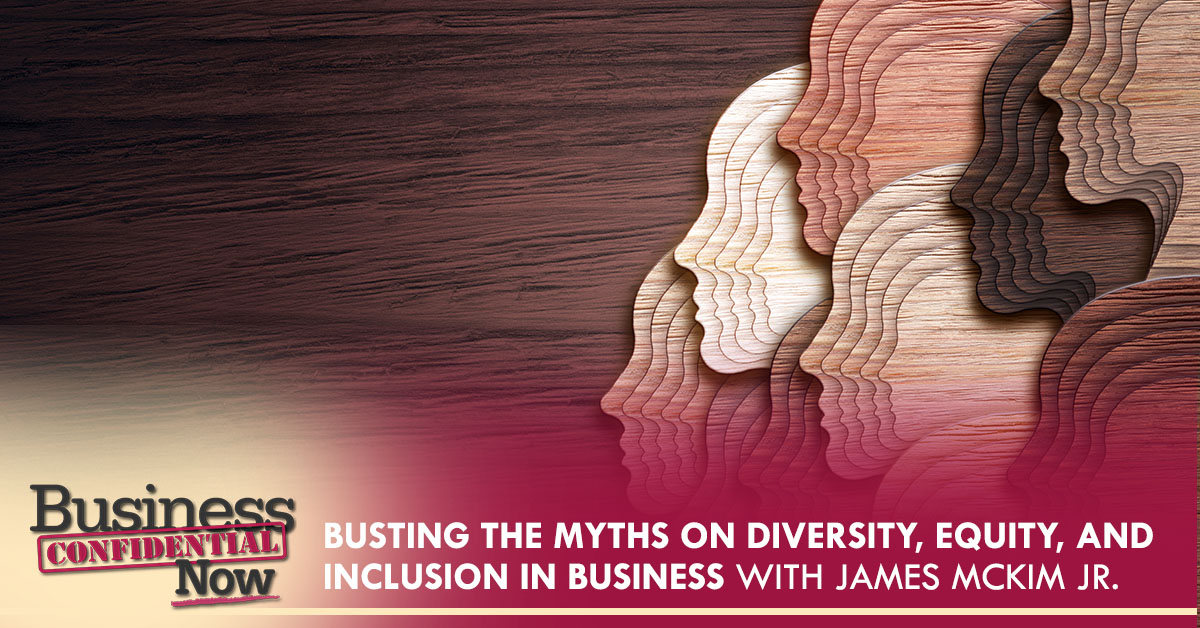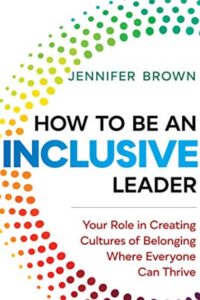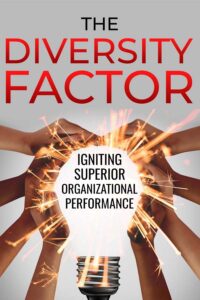
Photo Credit: © iStock | Belitas
Diversity, equity, and inclusion are three key areas of helping individuals thrive professionally and personally in the workplace. In this episode, James McKim Jr., the founder of Organizational Ignition, shares his knowledge as he determines the myths surrounding diversity, equity, and inclusion in businesses. Some companies are committed to carrying out the DEI Principle to benefit the organization’s bottom line. However, there is a difference between being committed to carrying out the DEI principle from applying it the right way. Join James as he shares how you can take this into action and watch your organization and its people grow and thrive!
—
What You’ll Discover In The Myths Of Diversity, Equity, And Inclusion In Business
- What myths keep the Senior Management from doing the smart thing?
- The tools and technology that can help people put these good intentions into action
- How can a small, midsized business grow and apply the DEI Principle in their business?
GUEST
 James T. McKim, PMP, ITIL, is the founder and managing partner at Organizational Ignition where he and his team help organizations ignite efficiency through aligning people, processes and technology. He’s a sought-after speaker, coach, change manager and conference presenter, and is frequently interviewed by the media on organizational performance through diversity. His new book is The Diversity Factor: Igniting Superior Organizational Performance (EPIC Author Publishing, March 1, 2022).
James T. McKim, PMP, ITIL, is the founder and managing partner at Organizational Ignition where he and his team help organizations ignite efficiency through aligning people, processes and technology. He’s a sought-after speaker, coach, change manager and conference presenter, and is frequently interviewed by the media on organizational performance through diversity. His new book is The Diversity Factor: Igniting Superior Organizational Performance (EPIC Author Publishing, March 1, 2022).
—
Busting The Myths On Diversity, Equity, And Inclusion In Business With James McKim Jr.
Diversity, equity and inclusion myths often hijack the critical work needed to create change that allows organizations to benefit from the richness diversity brings. After all, the World Economic Council studies confirmed that diverse organizations outperform their non-diverse peers by anywhere from 20% to 36% across a wide range of key performance metrics, including profitability, innovation, and decision-making. What are these myths that are hurting the bottom line? Stay tuned and find out.—
I have another terrific guest for you. He’s James McKim. James is the Founder and Managing Partner at Organizational Ignition, where he and his team help organizations improve their performance through aligning people, processes, and technology. He’s also the author of The Diversity Factor: Igniting Superior Organizational Performance. What a great subtitle. Who doesn’t want to ignite superior performance? Let’s get started and find out about these diversity, equity and inclusion myths that are holding organizations back. Welcome to the show, James. Thank you very much, Hanna. It’s great to be here. It’s great to have you. Many studies and so much data are quantifying the bottom-line benefits of diversity. Please tell us about these diversity, equity and inclusion myths that are keeping senior management from doing the smart thing. What are they? There are a number of myths. I will start with the myth that there is a pure social justice reason for paying attention to this and doing this work and that social justice reason for business goals and objectives. You mentioned that I have a book, and it shows that’s not the only reason that we should be focusing on diversity, equity and inclusion. It’s because of the benefits to the organization’s bottom line that we should be focusing on this very important issue. It’s a very important set of resources and tools that an organization has. Another myth that we see, particularly in nonprofit organizations, is that we’re a mission-driven organization, so we carry our commitment to fairness and equality in our ongoing work. While the commitment is probably there, the thinking is that the mission may have embedded in it this notion of dealing with diversity. It’s one thing to think about diversity and be committed to it. It’s another thing to know how to go about doing it. It's one thing to think about diversity and be committed to it. It's another thing to know how to actually go about doing it. Share on X I did some work with the New Hampshire Center for Nonprofits, where we surveyed nonprofits from across the state. Interestingly enough, probably about 70% or so of them said that they understood how to deal with and how to leverage diversity, equity and inclusion. It was because they said, “We’re a mission-driven organization. Our focus is diversity.” Some of the other questions we asked them got us to understand that that was merely a response from what they knew, what they thought their mission was. When it came to the answers to the questions about how they implemented diversity, equity and inclusion or what tools they use, it was quite obvious that they didn’t know how to embrace diversity, equity and inclusion. That’s another one of those myths that were a mission-driven organization and we deal with it every day. Another myth that I hear is particularly in the more rural areas or non-big city parts of the nation where there are not many people of color. They say, “We’re a predominantly White area. We don’t have enough diversity to worry about it.” To that, I say, “Let’s define the term diversity.” I love the definition that Marilyn Loden from Johns Hopkins Institute, when she was at Johns Hopkins Institute in 1991, came up with that she referred to as the diversity wheel. She says that diversity is about personality characteristics. She said there are primary characteristics of our personalities that are characteristics that don’t change over a lifetime. It’s how we identify ourselves internally. Our age, we’re born on a certain day, and that day is never going to change. While we will grow, we’re always born on that same day. We have the same early influences as we mature. Our race doesn’t change and our gender does not change. Although these days, our gender can change, but if it does, it’s going to change once in our lifetime. It’s not going to change multiple times. That’s pretty stable and it’s how we identify ourselves. There are these primary characteristics that she talks about that define our personality and diversity. There are these secondary characteristics that have to do more with how we interact with the rest of the world. What is our religion? What do we practice? What are our habits? What’s our socioeconomic status? What’s our marital status? Those things that have to do with how we interact with and how we’re seen by the rest of the world are those secondary characteristics that make up personalities. Lee Gardenswartz and Anita Rowe, in 2007, came up with a tertiary set of characteristics. They used the term dimensions. That’s all about how we interact in an organization. What function do we perform in an organization? Are we part of marketing or are we part of sales? Are we part of research and development? Are we part of HR? What’s our function in the organization? What’s our seniority in the organization? Are we new to the organization or have we been around for a while? Are we management or individual contributors? The base concept that Marilyn Loden came up with is diversity is about these personality characteristics. To have diversity means you have people with these different personality characteristics, not just Black people, not just women, which is what diversity sometimes is used to refer to. This notion that because you don’t have a lot of racial diversity, that you don’t have diversity or can’t have diversity, that’s the myth. The power comes in an organization where you have different perspectives, and those different perspectives come from people with different personality characteristics. That myth of, “We can’t deal with diversity because we’re only in a place where there are Whites,” that’s a myth. That’s not realistic. There are several others that can keep going on. This is a conversation. I’m curious to hear what your thoughts are about what I’ve said so far. We can add others as we go. I love the way you talk about diversity being a set of characteristics and not just the visual ones that people associate with, the race, the gender, things that are obvious in that regard. It does go to the decision-making when you talk about different perspectives that people can bring to the party and how they can have more informed decision-making as a result of that. One thing else that you mentioned that piques my curiosity is when you’re talking about the nonprofit, having the commitment but not knowing how to implement it. Could you elaborate a little bit about the kinds of actions, tools or technology that might be available to help people put these good intentions into action? The power comes in an organization where you have different perspectives from people with different personality characteristics. Share on X One of the first things that I generally recommend an organization does is if you don’t have one already, form a diversity committee. You can call it a diversity committee. You can call it a diversity, equity and inclusion committee. You can call it a DEI committee. You can call it diversity, equity and inclusion and belonging committee. Some people use the term JEDI for Justice, Equity, Diversity and Inclusion. Call it whatever you want, but focus on making sure you have diversity in your organization that is treated equitably and inclusively. That’s one of the first things I recommend that organizations do. Think about who your stakeholders are and then create a committee that includes representation from all of those stakeholders. The inclusion piece helps there. Another low-hanging fruit, if you will, that an organization could do is to have everyone learn about the basic terms of diversity, equity and inclusion. Define those terms. Everyone in the organization knows what they are and use the language in the same way. Agree on the definitions of the terms that you’re using. This comes from my background. I got a degree in Philosophy. They teach us to define things before you start talking about them. Sometimes it helps also to define what something is not, to better understand what it is. Getting some training or reading up on those terms or those definitions is another something that you can do very easily. Another thing that I try to tell organizations that is a low-hanging fruit is to think about what it means to be an inclusive leader. Jennifer Brown has written a great book called How to Become an Inclusive Leader. She talks about the inclusive leadership development continuum. Understanding the continuum and understanding how we learn about things is so important and easy. It doesn’t cost anything, which by the way, is another myth that we hear, “Diversity, equity and inclusion are too expensive for us to engage in.” Forming a committee is not expensive. Learning about how to be inclusive is not expensive. You go buy Jennifer Brown’s book and read it. You’ll start to understand how to be inclusive going from the unaware stage, which is where you don’t understand this diversity thing and why people are paying attention to it. Or if you are paying attention to it, you’re only doing so because you’re trying to follow the EOC guidelines here in the United States. You’re being compliant to create an atmosphere where people don’t feel like they’re being discriminated against.
How to Be an Inclusive Leader: Your Role in Creating Cultures of Belonging Where Everyone Can Thrive

Diversity, Equity, And Inclusion: Look at your organization from the perspective of how you can improve its performance and recognize that diversity, equity, and inclusion help with that aspect.
Important Links
- Organizational Ignition
- The Diversity Factor: Igniting Superior Organizational Performance
- How to Become an Inclusive Leader
- https://www.Facebook.com/jtmckimjr
- https://www.linkedin.com/in/jtmckimjr/
- https://www.Instagram.com/mckimjames/
- https://Twitter.com/jtmckim
- Building A Cyber Security Culture To Protect Your Organization From Cyber Threats With Perry Carpenter – previous episode
- If you liked this interview you might also like these Human Resources episodes
Join, Rate and Review:
Rating and reviewing the show helps us grow our audience and allows us to bring you more of the rich information you need to succeed from our high powered guests. Leave a review at Lovethepodcast.com/BusinessConfidential
Joining the Business Confidential Now family is easy and lets you have instant access to the latest tactics, strategies and tips to make your business more successful.
Follow on your favorite podcast app here as well as on Twitter, Facebook, YouTube, and LinkedIn.
Download ♥ Follow ♥ Listen ♥ Learn ♥ Share ♥ Review ♥ Comment ♥ Enjoy
Ask Questions or Recommend a Topic/ Guest:
- Use our convenient Get in Touch form
- OR e-mail feedback(at)BusinessConfidentialRadio.com
Disclosure:
This post may contain links to products to products on Amazon.com with which I have an affiliate relationship. I may receive commissions or bonuses from your actions on such links, AT NO ADDITIONAL COST TO YOU.

